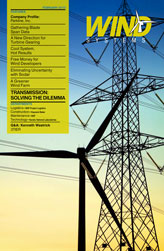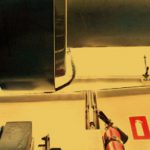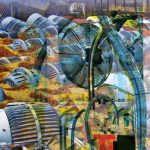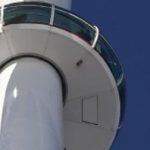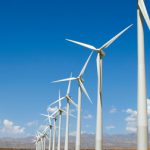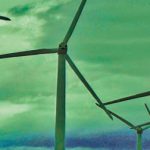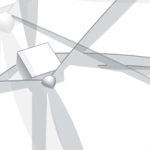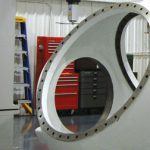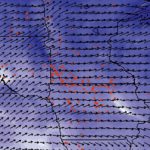As the wind energy matures, project developers and financiers are asking for more-accurate predictions of power performance. Remote sensing systems including sonic detection and ranging (sodar) and laser imaging detection and ranging (lidar) are gaining currency as a way of measuring wind at the higher heights demanded by today’s utility-scale wind turbines. As remote sensing gains currency and has a track record of being deployed in many locations worldwide, the industry has developed a greater understanding of how advanced wind characteristics affect power performance. This article provides an overview of some of the commercial applications of sodar.
Sodar has been used commercially by the wind industry in the 1980s for micrositing, and more recently for wind resource assessment. Recent advances in sodar technology have improved the accuracy and reliability of sodar systems, and sodars have been gaining wider acceptance since 2007.
In 2008 Second Wind, Inc., introduced an advanced sodar system, the Triton™ sonic wind profiler, in the United States. Since that time Tritons have been installed by leading wind energy developers in North America, France, Spain, Italy, Eastern Europe, and Australasia.
Accuracy is the key requirement for acceptance of a measurement technology. Historically, remote sensing systems have been compared with anemometry, which creates some challenges for comparison. Lidar systems can be placed directly under a met tower, which makes correlation a simpler matter. Because of the possibility of fixed echoes—echoes that bounce off of non-moving objects and generate false data if not accounted for—a sodar must be placed at least one tower height from the tower. Sound waves produced by the sodar can bounce off of the meteorological tower or other objects in the environment, creating false readings. Even with filtering of the data to eliminate tower shadow and flat terrain, since the wind is an unseen force, slight but measurable variations may occur over the 60-200 meters that will reduce the correlation coefficient. However, modern sodar systems—when properly sited and with appropriate data filtering—will correlate with anemometers at about 0.98 (see scatterplot graphic for an example).
Sodar, like anemometry, can play three basic roles in the life cycle of a wind project:
1) Wind prospecting: The quick deployment of sodar systems makes them appealing for prospecting, to determine if an area merits further study as a wind site;
2) Resource assessment: The ability of sodar to measure higher heights at a lower cost makes these technologies useful for resource assessment and the development of project energy estimates;
3) Operations and maintenance: The portability of sodar systems allows them to be used in gathering strategic wind data on an operating wind farm to assess operations and predict maintenance needs.
Wind Prospecting
Sodar systems are finding favor with wind developers and community wind groups who want to quickly assess the wind potential at a site. They may be validating local conditions against a mesoscale map, or determining whether and where to place met masts. The rapid deployment and mobility of sodar systems gives them a significant advantage over met masts in this application; they are also much more readily deployed than lidar systems because of their lower power requirements.
Candidate sites used to be chosen by referring to historical data, which were usually collected only up to 30 meters, combined with subjective site evaluations. With a rapidly deployable, portable remote sensing system, six or seven sites can be prospected during a period of six months with measurements at heights of 50-200 meters. (ref: www.windwire.blogspot.com/2009/04/sodar-based-wind-measurements-for.html). By rapidly eliminating sites over a short period of time, wind developers can make a quicker and better choice of a candidate site for a lengthier resource assessment study.
Wind Resource Assessment
A wind resource assessment study is one of the most important components of a wind farm development project. The study results in power performance projections, which determine project financing. The higher height data provided by sodar allows a greater understanding of the wind resource across the area swept by the turbine’s blades.
Expanded use of sodar in wind resource assessment has been made possible by the technological improvements in sodar, especially the increased accuracy and reliability. Developers are still using remote sensing in conjunction with met masts, but the length of deployment of the remote sensing system has increased from days or weeks to months. Typically a complete wind resource assessment study is conducted during a period of 12 months so that the wind resource can be measured during all seasons of the year.
Where third party financing is not required, complete project assessments have been performed only with sodar, in conjunction with historical data and modeling. However, as of this writing, leading bank engineering firms do not accept sodar data exclusively for energy assessments.
Remote sensing will only replace the met mast when the accuracy has been accepted over a wide range of site conditions, and when remote sensing systems are able to operate unattended, in all weathers, on minimal power, the way met mast systems are. Once those criteria have been met, wind developers will embrace the portability, small footprint, and low profile.
Relying on actual measurements of the wind speed at different heights, rather than extrapolating the speeds at higher heights using estimated shear exponents, allows more accurate predictions of turbine power performance. A trend toward underperformance of wind farms based on anemometry data is calling attention to the promise of sodar (and lidar) as predictors of power performance.
In addition, measuring the number and extent of shear events—short periods of extreme differences in wind speed or wind direction at different heights—can allow for a better understanding of the resource suitability. Shear is thought to contribute to wear and tear on the turbine, and the evaluations of a wind resource assessment study using higher height data can be used to help choose the proper type of turbine.
Micrositing was the first application of sodar in wind development, and sodar continues to make a strong contribution during this phase of project development. Although many factors must be considered when placing turbines in a wind farm layout, understanding localized variations in the wind resource will help refine energy projections and identify locations with higher shear or turbulence.
Operations and Maintenance
Before the use of portable sodar systems, wind farms often operated with just one or two met towers for reference. Once the turbines are installed, more and better wind data is needed to understand why the turbines perform as they do and as an aid to operations and maintenance. The ability to move a sodar system around on an operating wind farm gives wind farm operators access to strategic wind data that they can use to assess their operations and help predict maintenance needs.
Operators are also beginning to use information from sodar systems to provide information to forecast models. In some markets, accurate forecasts are key to maximizing revenues. More turbine hub-height wind data can enhance the quality of forecasts.
Considerations in Evaluating a Sodar System
When evaluating a sodar system, check the manufacturer’s specifications regarding:
•Power requirements. For operation in remote locations, a system with low power needs that can be met by a few solar panels offers a higher degree of autonomy. Remote sensing systems that require relatively large amounts of power may require an auxiliary power supply system.
• Operation in various types of weather, and whether the manufacturer has developed algorithms to account for rain.
• Correlation to anemometry. How many studies have been completed to compare the remote sensing system to tower-mounted anemometers, what is the correlation, how long have the studies been carried out for, and how many heights have they been correlated at? A correlation coefficient of approximately 0.98 to anemometry measurements improves confidence in the remote sensing data.
• Field serviceability. If the sodar system fails, can it be repaired in the field or does it need to be returned to the manufacturer?
• Amount of experience in wind site assessments. How many units have been deployed, for how long, and what is the equivalent number of years of operating experience?
Conclusion
Used either as a complement to met tower data or as a standalone tool, remote sensing systems are finding broader application in wind resource assessment programs and are also being used throughout the lifecycle of a wind farm. This game-changing technology is helping wind farm developers and financiers reduce the uncertainty of wind resource assessments, micrositing studies, and wind farm operations, thus further improving the viability of wind as an energy source.



















